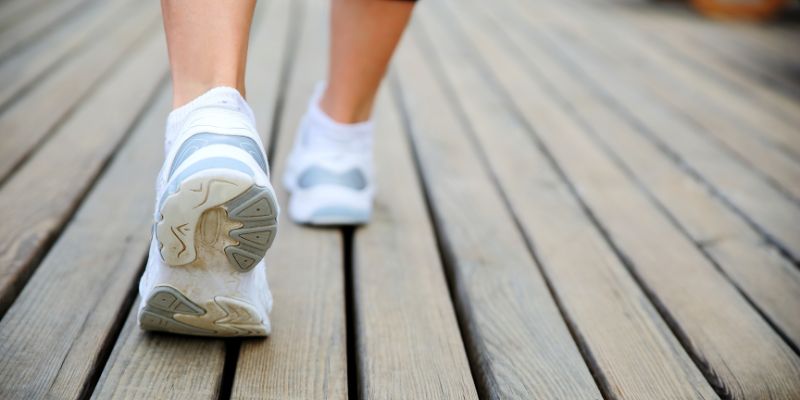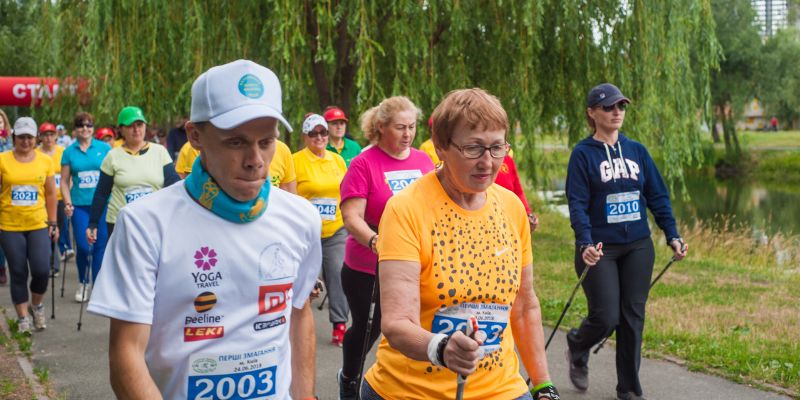
Welcome to your walking marathon journey! Whether you're a seasoned walker or just starting out, this article is your friendly guide to preparing for a marathon on foot. We will take you step by step through every stage of preparation – from training to finishing the track. So, lace up your shoes, and let's start this exciting adventure together!

Calculating Steps in a Marathon
Completing a 26.2-mile marathon requires different numbers of steps depending on the length of each stride taken by the runner. On average, most men have a stride length of approximately 30 inches; consequently, around 55,000 footsteps are necessary to accomplish this feat. Nonetheless, if an individual's gait spans about 26.5 inches (typical for males), completing said marathon will require more than 63,000 steps instead.
This is just a rough guess, so keep that in mind. The total number of steps you take could differ as people walk for varying lengths. Factors such as height, level of fitness, and gait can influence stride variability.
Your Marathon Walking Training Journey
Five Months Before the Marathon
Right now, you should focus on slowly growing the distance you walk. Set up a schedule that adds a few more miles every week. This steady rise is significant for getting the endurance you need for the 26.2-mile task. Use different scenery and weather to help your body and mind get used to different situations.
One Month Prior
During this time, you should go on your longest workout walks. During these sessions, you can try out different diets, water, and gear. Pay attention to how other foods and drinks make your body feel. Also, now is the best time to ensure that the shoes and clothes you choose are easy and suitable for long journeys. Now, you should improve your plan and get used to your schedule.
Two Weeks Before the Marathon
You are now cutting down on your miles. This part of tapering is essential for healing and ensuring you don't overwork your body before the event. For instance, if your highest speed was about 35 miles, you might want to cut it down to about 28 miles and then 20 miles over the next few weeks. This cutback helps your muscles heal and saves energy for the big day.
The Final Week
Prepare yourself for potential soreness after your run, and allow ample time to recuperate. Be mindful of your body's signals and rest as needed. Also, check your gear again and go over your race day plan. Ensure you don't have to worry about anything when going for the race.
The Day Before
Carb-loading is a popular approach, but don't eat too much. Stay with familiar things that are easy to digest. Take it easy today and get your mind ready for the race. Think about the course and your plan.
Race Day
Eat a light breakfast and drink a lot of water to get started. Put on your tried-and-tested gear and dress for the weather. Remember, the marathon experience will differ from training walks, so stay adaptable.
Recovery After the Marathon
Give yourself a pat on the back when you finish the marathon! Be prepared to experience soreness after the run, and allow yourself sufficient time for recovery. Be mindful of your body's signals and rest when it demands. After you get better, you might start thinking about the next task!
Nutrition for Marathon Walking
- To keep going, your body needs the right food. Meals should have a good mix of carbs (like rice and bread), proteins (like chicken and beans), and vegetables. Proteins help cells heal, and carbs give you energy.
- Do not just drink a lot of water on training days. Do it every day. Your body works better and heals faster when you stay hydrated.
- Bring snacks with you on long training walks and race day. To maintain your energy levels, consume an energy bar or a banana or opt for a sports drink.
How to Choose the Right Gear for Walking a Marathon
- Comfortable shoes are essential! Opt for walking shoes that provide a snug fit and ample foot support. Make sure you wear them during training sessions to avoid any unexpected discomfort on race day.
- Wear clothes that are right for the weather. During hot weather, choose materials that are lightweight and offer breathability. Layering up is the optimal choice in colder climates, and it's essential to carry a hat and sunscreen when there's sunshine.
- Additional must-haves could include a compact backpack to carry water, edibles, and even a basic medical kit. Don't forget shades and cozy socks as well.
Why You Should Walk a Marathon
- Walking a marathon is a fantastic way to boost your overall health. It strengthens your heart and speeds up your Walking. A marathon is an excellent method to improve your general health. Compared to running, it increases heart strength and metabolism and reduces joint stress, all of which are beneficial for the health of your joints.
- A more manageable objective is to walk a marathon rather than take on the intimidating challenge of running one. You can aspire for it regardless of your fitness level or desire for a new challenge.
- Walking over extended periods improves both your mental and physical health. It improves your mood, eases tension, and makes you feel accomplished—all beneficial to your mental health.
- Running cannot give you the same level of immersion in the route and surroundings as walking a marathon can. It's an opportunity to discover and enjoy your environment.
- Walking a marathon is a social event that you may participate in. You can join walking groups, make new friends, and even contribute to charitable causes through your training and participation in the race.

Conclusion:
Great start to your marathon walk! You can tackle this rewarding task with proper training, diet, and gear. Remember that the journey to a marathon is as important as race day. Enjoy every step and be proud of your success. Whether it's your initial or recurrent marathon, nothing compares to the feeling of accomplishment. Lace-up your shoes and concentrate on reaching the finish line while savoring whatever lies ahead along the path. Celebrate your accomplishment and start setting objectives for future walking achievements now!



